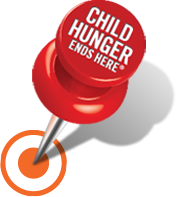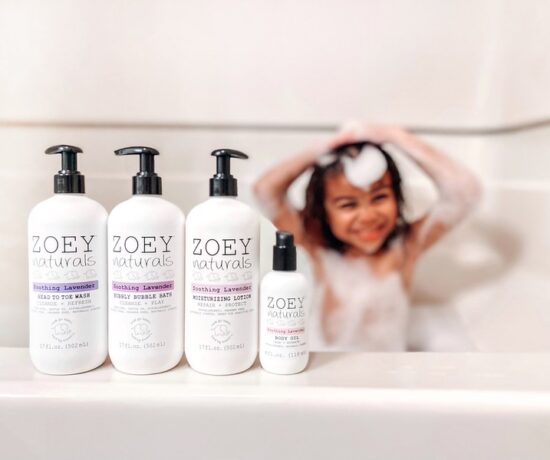For those of you who don’t know, Baby-Led Weaning (often called BLW) is a method of introducing solid foods into a baby’s diet where the child is in control. Rather than being spoon-fed pureed meals, the parents provide healthy foods that the baby can pick up, hold, and practice chewing on their own—with an adult nearby monitoring.
The “weaning” in the name of this feeding method can be misleading. The baby won’t be weaning off of breast milk or formula with BLW, just experiencing and exploring with solids in addition to the nursing or bottle feeds. This is a baby-directed form of feeding that is started gradually beginning when the baby is ready, which is usually between six to eight months of age.
If you would like to try Baby-Led Weaning with your child, make sure he or she meets the following criteria:
- Is at least six months old
- Has adequate neck strength – can sit up without support
- Is developing a pincer grasp – starting to pick up smaller items using just the forefinger and thumb
- Has lost the tongue-thrust reflex – where the tongue will automatically push food out of the mouth
- Is interested in mealtime – may try to grab your food
Okay, now that you have the background on BLW, let’s dive into why so many moms and dads are choosing this method of feeding for their precious little ones.

1 – It is Easier
Rather than having a separate meal time where you sit in front of the highchair and spoon feed your baby, you are able to eat at the same time your baby does. Little ones become part of the family meal time, and here’s the kicker: they eat what everyone else is eating—everything that’s safe for their developing body that is. With BLW, the whole family can eat together at the same time and everyone eats the same meal.
You also won’t be cutting your baby’s food up into little bite-sized pieces. With BLW, caregivers leave food items whole or in longer strips so babies can pick the items up and hold on to them as they bite off pieces. While your baby is under the age of one, don’t give him/her any honey or foods high in sodium or with a lot of added sugar. When choosing family meals, just avoid this short list of foods and you will be all set.
2 – It is Cheaper
Ever priced out baby food? It’s much more expensive than many people realize. Here’s a quick breakdown: on average babies eat six to eight ounces of baby food two to three times a day – that’s just under 750 ounces a month. With every four ounces costing $1 or more, that’s reaching nearly $200 a month! And that amount doesn’t include any formula, snacks, or teething wafers.
If you take the Baby-Led Weaning route, you will not be buying a single jar of baby food. You won’t be needing to buy any baby cereals or oatmeals either. There’s no need to spend hundreds of dollars on food each month that your baby may or may not eat—it’s downright depressing how much of that expensive baby food ends up uneaten on the bib, highchair, and floor.
Don’t get me wrong, food will land all over the place with BLW too, but at least it will be the same food you have to buy and prep for the whole family anyway. You just have to pick healthy meals and make a little more for the newest addition to your dinner table.
3 – Reduced Chance of Allergies
Again, with BLW your baby will eat all of the same healthy foods you eat. This includes some foods that (not too long ago) doctors were advising against for babies.

Introducing babies to a wide range of foods actually helps to reduce their chances of developing a serious food allergy. Studies prove that early introduction (six months rather than 12) has helped decrease the occurrence of peanut and egg allergies. Just make sure the eggs are fully cooked and the nuts are not whole.
4 – Fewer Food Aversions
When it comes to food, the more textures, colors, shapes, sizes, and smells young children are exposed to the better. Pureed foods only give babies one texture: smooth. They don’t teach babies how to chew or move food around in their mouths. Another big issue with only feeding your baby pureed foods until they are older is that they are more inclined to form aversions to foods with bumpy or lumpy textures later on.
A study by the NCBI (a division of the U.S. National Library of Medicine) was done comparing seven-year-olds’ eating habits based on when they first started eating solids that required chewing. This study found that babies who ate lumpy foods before nine months old ate a wider range of textures and more fruits and vegetables when they were seven. It’s a bit intimidating once you realize the long-reaching significance the foods babies start out eating have on the rest of their lives.
5 – Independent Eater
Babies who are spoon-fed all of their meals for four months or longer aren’t learning how to feed themselves. The baby-led part of this method is one of the key components of BLW, which allows the tiniest eaters to learn how to bring food to their mouths, takes bites, and even hold spoons and forks.
It’s important for little ones fed BLW meals to also be able to eat yogurt, oatmeal, and other mushy foods that require a spoon, so load up a few spoons for them and place them on their tray. Pre-loaded spoons are a perfect way for a new eater to learn how to spoon feed themselves. Resist the urge and let them do it. That’s a big rule of BLW; you have to let them figure it out on their own.
One of the greatest gifts of BLW is that you will have a tiny human who knows how to feed him or herself independently. Strangers were always coming up to me at restaurants and saying how they were amazed by my seven-month-old who ate well-rounded meals all on his own.
6 – No Overeating
With obesity being such a dangerous and prevalent problem in our country, it’s important for parents to help their babies learn to listen to their appetites. Parents want their babies to get every nutrient possible and not waste food, and in trying to accomplish these goals, parents can unintentionally overfeed their baby. When the caregiver is leading the feeding, he or she is deciding when the baby is full even though they can’t know for sure. Once babies are swatting the food away and crying, they usually have had too much to eat—many more bites than they would have if they were feeding themselves.
Baby-Led Weaning can help prevent obesity later in life by teaching young children the essential lesson of self-regulation. With BLW, when the baby is done eating they will stop bringing food to their mouths all together. When babies are given the lead, they will learn how to manage their pace and listen to their body each time they sit down to enjoy a meal.
7 – Neat Eater Sooner
Baby-Led Weaning is very messy at first. Babies love the freedom they have to experiment with foods. They will probably throw food on the floor or even smear it on their faces. There are great hacks out there for keeping the mess manageable such as DIY splat mats. You’ll want a hand-held vacuum, broom, or dog nearby.
All babies are messy eaters as they learn, BUT the key here is that BLW kids are learning how to feed themselves and have proper table manners sooner. Babies who start out on BLW will likely learn to be neat eaters earlier than kids who are spoon fed for the first several months. With Baby-Led Weaning, little ones join family meals much younger and will learn by your example how to behave at the dinner table.
8 – Food Love and Trust
It might look like early BLW eaters are just playing with their food, but they are actually learning so much as they touch, move, mash, pick up, and taste all of the different foods you place in front of them. This experimenting that babies will do is invaluable for them to learn what food is all about.
By allowing babies to be in control of what food goes in their mouths, how often, and how much, you are giving them the gift that many adults are still trying to attain: a healthy relationship with food. Rather than feeling trapped or forced to eat while sitting in their high chairs, babies starting out with Baby-Led Weaning enjoy meals where they are the boss. Kids under the BLW regimen will never feel tricked by food or end a meal feeling sick due to being overfed.
Sara Routhier is a Research Specialist and Staff Writer for Exercise.com. In addition to obtaining a degree in Elementary Education, being a public school teacher, family nanny, and tutor, she has over four years’ experience in content marketing. As a working mom with two boys under three, she knows how exhausting meals can be for parents. She hopes others can have success with Baby-Led Weaning like her family has.



